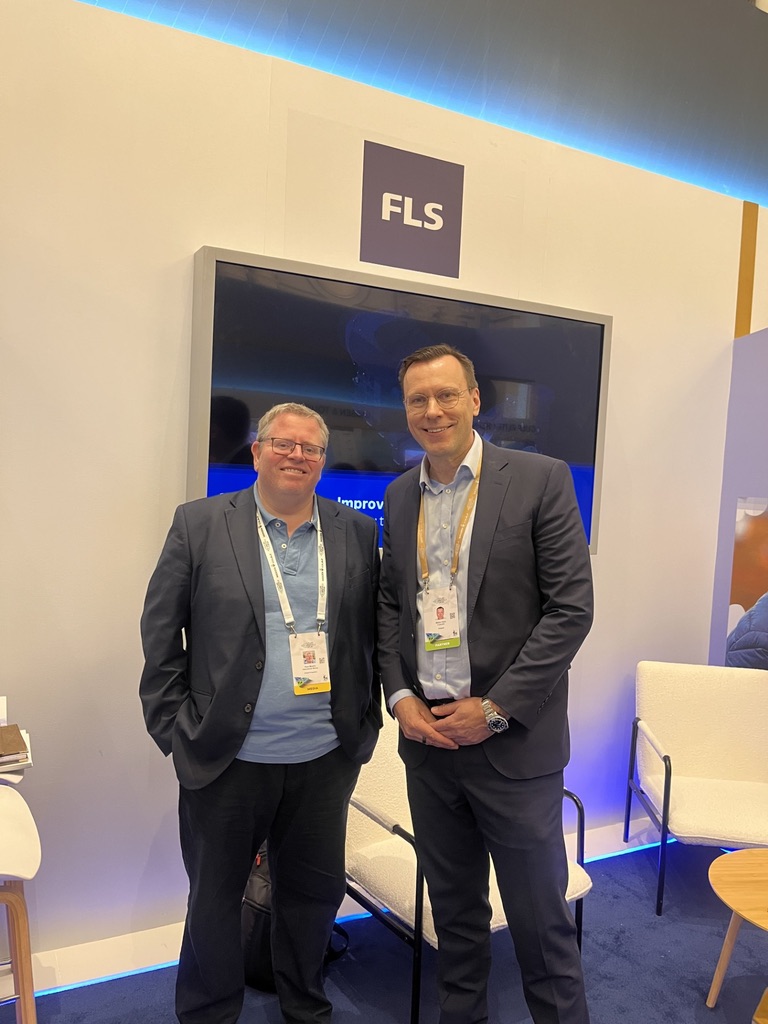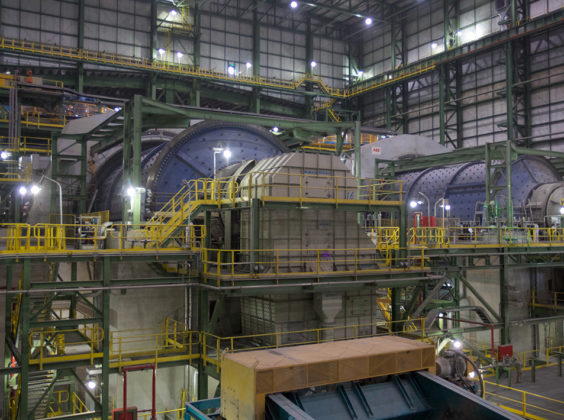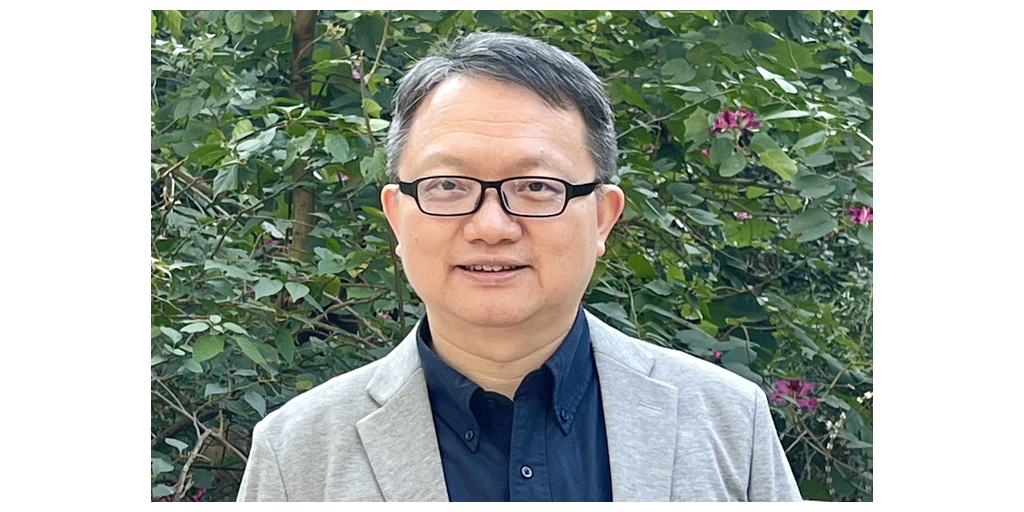Against the backdrop of the Future Minerals Forum in Riyadh, IM Editorial Director Paul Moore caught up with FLS CEO Mikko Keto to talk about Saudi Arabia’s huge growth potential that long term could mirror the level of mining growth being seen in other markets like Central Asia and South America.
IM Editorial Director Paul Moore and FLS CEO Mikko Keto at the Future Minerals Forum in January 2025 in Riyadh

Q Where does FLS see the potential in Saudi Arabia for your product range and what is the level of your current activity in the Kingdom?
Phosphate mining and to some extent bauxite and industrial minerals mining is well established but it is a young country from a metallic mining point of view – however we see the Kingdom’s Vision 2030 having the potential to rapidly grow the country’s mining industry by orders of magnitude. If you fulfil environmental and regulatory requirements then it is very clear that the Saudi government wants to fast track the mines that will result from the extensive and widespread exploration in the country that is ongoing by both juniors and established miners – some have licences covering whole mineralised belts. It also means faster permitting and licensing for actual mining operations. Typically from deposit discovery to an operational mine takes on average 18 years – in Saudi the bureaucratic part of that process has the potential to be shortened significantly – that doesn’t mean compromises are being made or corners cut – it just means a large and vibrant mining industry is a top priority for the Kingdom. Most of the major mining houses and the big EPCM groups attend FMF today. Many of the mining groups already have exploration licences in Saudi or are bidding for them – and of course at FLS we have existing relationships with them. In terms of existing business, we are in the middle of executing a project in phosphate with Ma’aden and that is going well – this is for the Phosphate 3 Phase 1 mine site in the Northern Province and includes both primary and secondary sizers, apron and HAB feeders, cone crushers, screens, cyclone clusters, ball mills, paste and high-rate thickeners, horizontal belt filter, slurry pumps knife-gate valves and flotation columns. We have also worked with Ma’aden at their gold operations in the past. I would say they are quite an advanced operator, they known what they are doing and have a great competence pool around mining. At the same time we are working with the education system in Saudi so we can help bring up the next generation of mining and mineral processing engineers. And at FLS we are making more direct investment into the Kingdom – improving our local presence to enable more manufacturing and more local sourcing and fabrication. In the coming years as new mining projects develop, we will invest further with more service capabilities to meet those needs. In terms of our product range, to give an example we are expanding rapidly with our pumps and cyclones in mining, and these product lines have huge potential in the country.
Q Future flowsheets seem to be a central topic of conversation in mineral processing today – are miners more willing to look at innovative technologies that have the potential to bring significant energy, productivity and efficiency wins?
Definitely we are seeing the mood changing in that direction. Taking coarse particle flotation for example, where we have our coarseAIR™ technology, we already have pilots and see a lot of potential to ramp that up to a more commercial scale as customers gain more confidence when they see the results of those trials. Because the potential energy savings related to comminution are very significant. That means it is also really important from a sustainability point of view and ties in with our MissionZero goals. The same applies to our REFLUX ™ Flotation Cell which offers operates at a magnitude far beyond the capacity of existing flotation devices, reducing the required installation footprint and can be used with ultra fine up to coarser material. We also predict that technologies like these will become part of the mainstream flowsheet flotation design instead of just handling certain streams, such as their potential impact. Back to comminution and we see our HPGR gaining more and more popularity. It is not a new technology – we have close to 170 commercial installations running in hard rock; but it is definitely in the mix more and more in terms of actually replacing SAG and ball mills. And they are becoming more prevalent in new commodities – in India in iron ore, for example, we are supplying two of the world’s largest HPGRs at 3 m diameter x 2 m width – expected to be installed and commissioned during 2026. We are the market leader by volume in HPGRs – in 2024 alone we received orders for 15 units. The move to HPGRs is driven by a desire for greater efficiency and sustainability. Another future flowsheet component is the vertical tower mill – two years ago we installed the world’s largest vertical steel-media tower mill with dual-duty throughput for a North American Tier-1 gold miner’s operation in the Dominican Republic. The FTM-4500 was delivered in under 14 months from receipt of the order. And you also need to look at what is feeding these new milling solutions – and in gyratory crushers our TSUV range is unique in the market in terms of safety and efficiency factors. Large gyratories seem to be the primary crushing preferred option today – again, at FLS we are setting new standards here – and we are delivering one of the world’s largest gyratories as part of a crushing station to a major copper mine in Peru for their expansion project. We are a full flowsheet provider – so we can optimise the HPGR or vertical mill feed but also provide the most optimum downstream options from flotation to thickening and filtration.
Ball mills at Bozshakol plant of Almalyk (courtesy Almalyk MMC)

Q Central Asia, with major mining nations such as Kazakhstan and Uzbekistan, has been a really fruitful market for FLS in recent years – what is behind your success there and can you give an update on growth in that part of the world?
We were one of the early entrants in Kazakhstan in terms of the premium global mineral processing players, and I think that was crucial in helping us to get to know that market and for the customers there to get to know our value proposition. And in a market like that, with early large scale successes, other operators then often follow suit when they see the productivity gains. Copper miner KAZ Minerals has been a close partner of ours – including major concentrator deliveries over the years – two in Bozshakol copper mine in 2014 and a series of contracts at Aktogay copper mine – a new 75,000 t/d concentrator in 2015 and a new 75,000 t/d line delivered in 2020 which doubled their throughput to 150,000 t/d. These lines included the whole flowsheet including SAG and ball mills, gyratory crusher, pebble crusher, primary and regrind cyclones, flotation cells, scavenger cells and cleaner cells, dust collectors, overland conveyor, belt feeders, in-plant conveyors, lime slaking plant, screens, concentrate and tailings thickeners. Even in the mature South American market, the Aktogay flowsheet has been something of a showcase, and has actually been referenced there by others in discussions. Moving to Uzbekistan we are completing much of the work on the MOF-3 copper-gold-moly 60 Mt/y concentrator, including associated conveyors, for Almalyk MMC with their EPC contractor Enter Engineering and recently announced another strategic cooperation agreement with them for the delivery of the core mineral processing equipment for MOF-4. This covers HPGRs, screens, copper and molybdenum flotation, vertical re-grind mills, concentrate and tailing thickeners, concentrate filters, gravity concentrators, samplers as well as pumps, cyclones and valves. Learning from MOF-3, but also making use of the latest innovations, MOF-4 will incorporate a lot of our latest technologies and will add another 60 Mt/y, bringing Almalyk’s overall ore throughout capacity to over 160 Mt/y.
Q Many of the world’s largest mines are getting bigger through brownfield expansions – is that a major market driver today?
You are right, much of the new capacity, especially in South America, is being added through large expansions at Antamina, Quebrada Blanca, Collahuasi and a number of other operations. We are very present in big copper there and are actively involved in a lot of this work in Chile in Peru to add capacity. That said there are some exciting greenfield projects as well in South American copper – such as in Argentina and projects like El Pachon, Taca Taca, Los Azules, Josemaria and others. We just talked about the level of expansions also in Central Asia and our close involvement with key customers there. All of these are long term investments being made by miners involving decades of production – they aren’t short term moves. These longer term thinking moves are also vitally important for the economies of these countries going forward and aren’t just being driven by short term metal price fluctuations. The level of CAPEX being committed also means they want to be sure of the results and the longevity of the mineral processing solutions being delivered, as well as making them as sustainable as possible from an energy and water point of view – and we are a life of mine partner for these types of customers. Our investment reflects this – in Uzbekistan for example we are investing in new service capability to ensure we are able to support MOF-3 and now MOF-4 long term. Beyond MOF-4, even MOF-5 has been talked about on the horizon, which would potentially make Almalyk the largest copper production complex in the world with over 500,000 t of copper metal produced per year.



